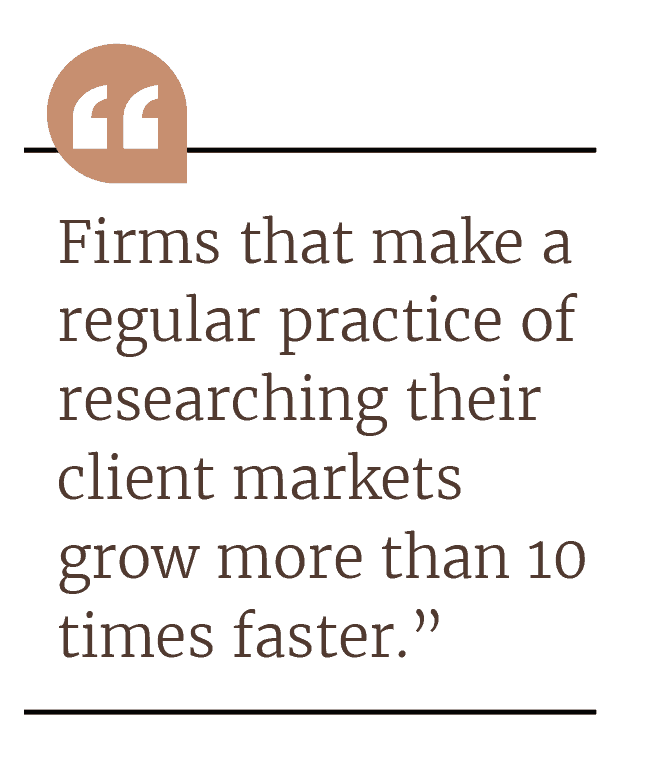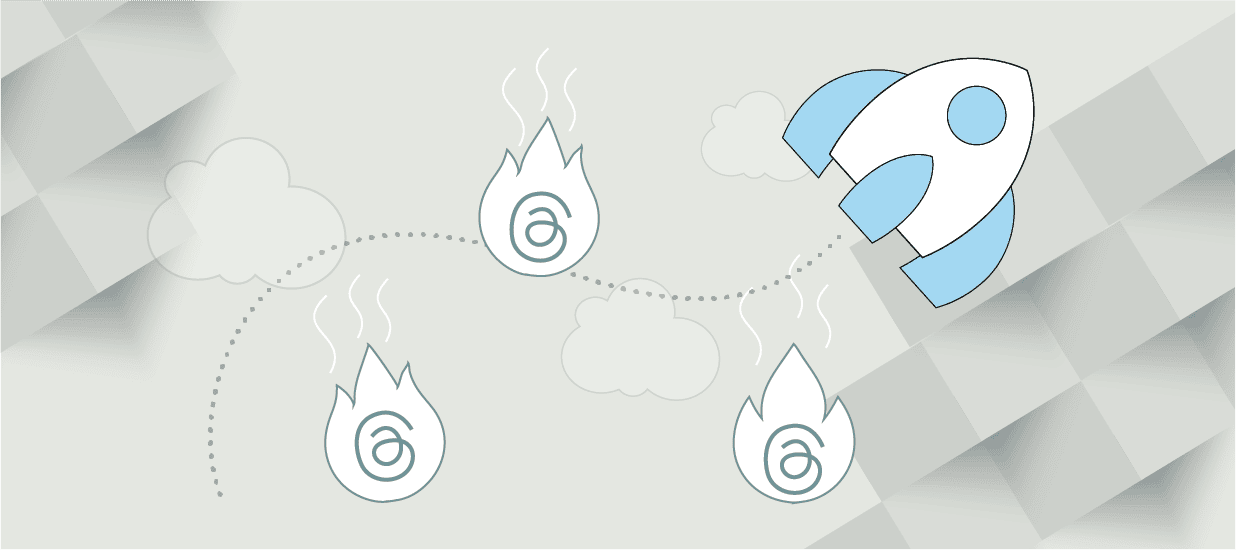There are a lot of ways to get to know your customers, but the best way is a direct conversation. Nothing beats picking up the phone and having that candid, one-on-one interaction.
These calls allow you to hear firsthand what customers are thinking, desiring, planning, building, and envisioning. You’ll tune into their needs more closely, and that will influence your roadmap and positioning. You can even pick up their own words to use in your messaging, thus ensuring it resonates.
It’s no wonder that companies that conduct customer research grow faster. Marketing firms that make a regular practice of researching their client markets grow more than 10 times faster than those that don’t, according to research from HubSpot.
But when you get on a call with a customer, how can you ensure you’ll elicit meaningful insights? Listening closely is an art and a skill. It requires curiosity, open-mindedness, and a willingness to be comfortable with pauses and “dead air.” The good news is, there are specific tactics you can learn to listen well and encourage candor. They’re not hard, and the more you practice the better you’ll get.
Get to Know Your Interviewee
An easy way to get the conversation rolling is by asking your interviewee about their role and their company. It helps your customers start talking and it helps you get inside their world. For example:
Question: To help my understanding, I’d love to hear a little bit about you, your title, your role and your organization.
Interviewee: So, we’re a financial services company and I report to the CEO. My title is business analyst, but it doesn’t really describe what I do. My job can involve anything from project management to process improvement to vendor review or product acquisition or whatever. It’s a bunch of things that don’t easily fit into one bucket.
Already, you have a sense of this person’s daily experience. Throughout the conversation, your goal is to listen with a customer-centric ear. If you can genuinely understand the customer’s world, you will see how your offering intersects with their pain points and goals. Ultimately, you will understand your own value proposition better.
Ask Open-Ended Questions
Clear the way for your interviewee to go where they want. It may not be where you expect, but sometimes that’s where you find the most valuable insights. Given an open question, people typically head toward the place where they experienced something memorable that caused a strong emotion.
Question: So, could you walk me through what happened with the implementation?
Interviewee: Well, for starters, it was never as seamless as they said it would be. They said you would download an Excel file, upload to their platform and that was it. You were done. It was definitely not like that. It took one of my colleagues essentially an entire day to get all of the data uploaded to their platform.
Phrase a Question in Different Ways
A direct question might hit a stone wall, but don’t give up—just try asking in a more indirect way. You might get closer to the information you want.
Question: How much did the deal cost? Do you remember?
Interviewee: No, I’m sorry, I don’t.
Question: OK. Do you think it was in the $10,000 to $15,000 range? Or do you think it was higher?
Interviewee: Oh, no. Much lower.
Question: Oh, it was lower. OK.
Interviewee: Yeah, it was less than $5,000.
Play Back What You Hear
Summarize what you are hearing, perhaps even distilling and re-articulating it. Your intent is to confirm that you’ve truly understood. If you haven’t, you want to hear more. You eventually want your interviewee’s response to be, “Yes, that’s right.” At that point, you can move to the next question. Keep questioning and playing back until you get to “Yes, that’s right.”
Question: It sounds like it wasn’t necessarily the product capabilities, it was really the way the rep managed the answers to your questions, missed calls, and just overall engagement?
Interviewee: Yep, that’s absolutely correct.
Mirror to Invite Deeper Conversation
This tactic encourages interviewees to give more detail, and it’s surprisingly effective. By mirroring, or repeating, a couple of words that the interviewee has said, you signal your interest and that you want to know more. The interviewee usually responds with more detail.
Interviewee: All these companies are pushing their new user portals. They’re great, they have awesome features, but that kind of thing isn’t going to work for us.
Question: It’s not going to work?
Interviewee: No, not at all. More than half of our workforce is in environments where they may not even have internet access, and they’re working off a 2G cell signal. They’re lucky if they can send an email.
Say Nothing
That’s right, just leave dead air. People are uncomfortable with this and will talk just to fill the silence. If you ask a question and your interviewee doesn’t respond right away, don’t rush in. Take a deep breath and count to three.
Offer a Final Opportunity to Share
When you get to the end of your conversation, ask one last open-ended question, such as “Is there anything else you’d like to tell me?” Listen carefully, because this can be the place where someone shares an insight that is really on their mind. It comes at the end of the conversation when the interviewee is often the most comfortable and open. You might get a great summary, a reassessment, or a new insight, so it’s worth paying attention to.
Question: Is there anything else you think would be helpful for me to know?
Interviewee: I don’t think so. I mean, I’ve painted kind of a dire picture. It really isn’t like that all around. Obviously, we do continue to renew. We love the platform. We just want to be able to get as much out of it as we possibly can. We probably need to fix our relationship with the company to have a closer working relationship.
In this case, “Is there anything else you’d like to tell me?” revealed important information. It gave context to the entire customer conversation. Yes, there were frustrations, but all in all the customer loved the tool. And, importantly, it helped the customer articulate an actionable insight that would allow everyone to get more value out of the relationship. It could be as simple as setting up a weekly phone call—an easy fix that could pay off with much greater customer satisfaction and a long-term relationship.
Listen Well
Listening well is a vital skill for customer research. By practicing these techniques, you will get deeper insights from your customer conversations and you will understand them better. You may find these skills useful in daily life, too. If you’d like to share your own experience with customer interviews, reach out to us at [email protected]. We’d love to listen.
Learn More:
Certification Courses
Podcasts
- Win/Loss Analysis: How You Should Be Doing It
- Win/Loss Analysis: Discover What Makes Your Customers Tick
Author
-

With over 25 years in the technology industry, Natasha Narayan has made significant contributions globally, working with leading firms like Oracle and Fuji Xerox Australia. For questions or inquiries, please contact [email protected].
View all posts









